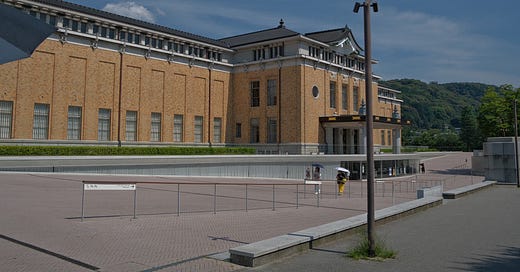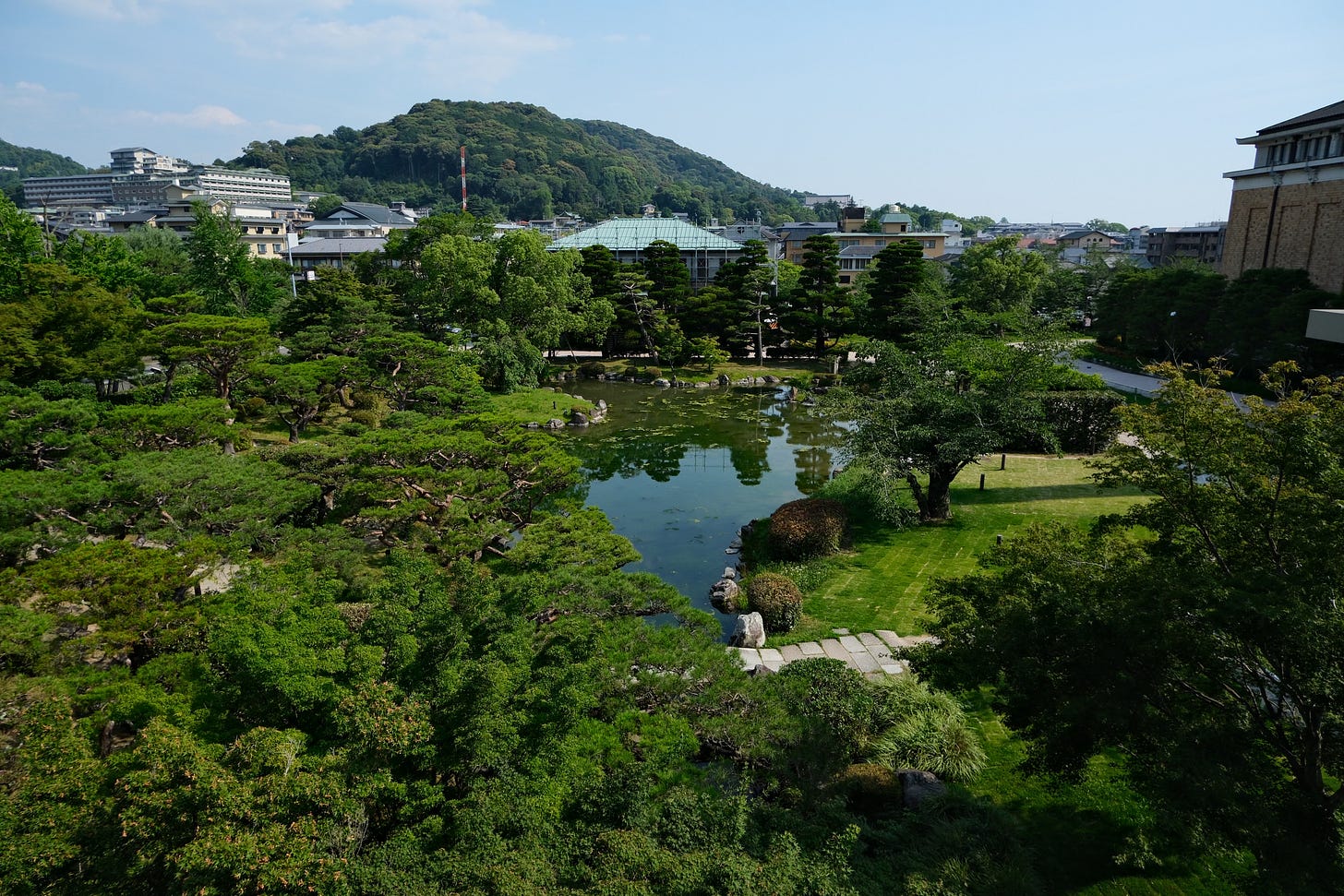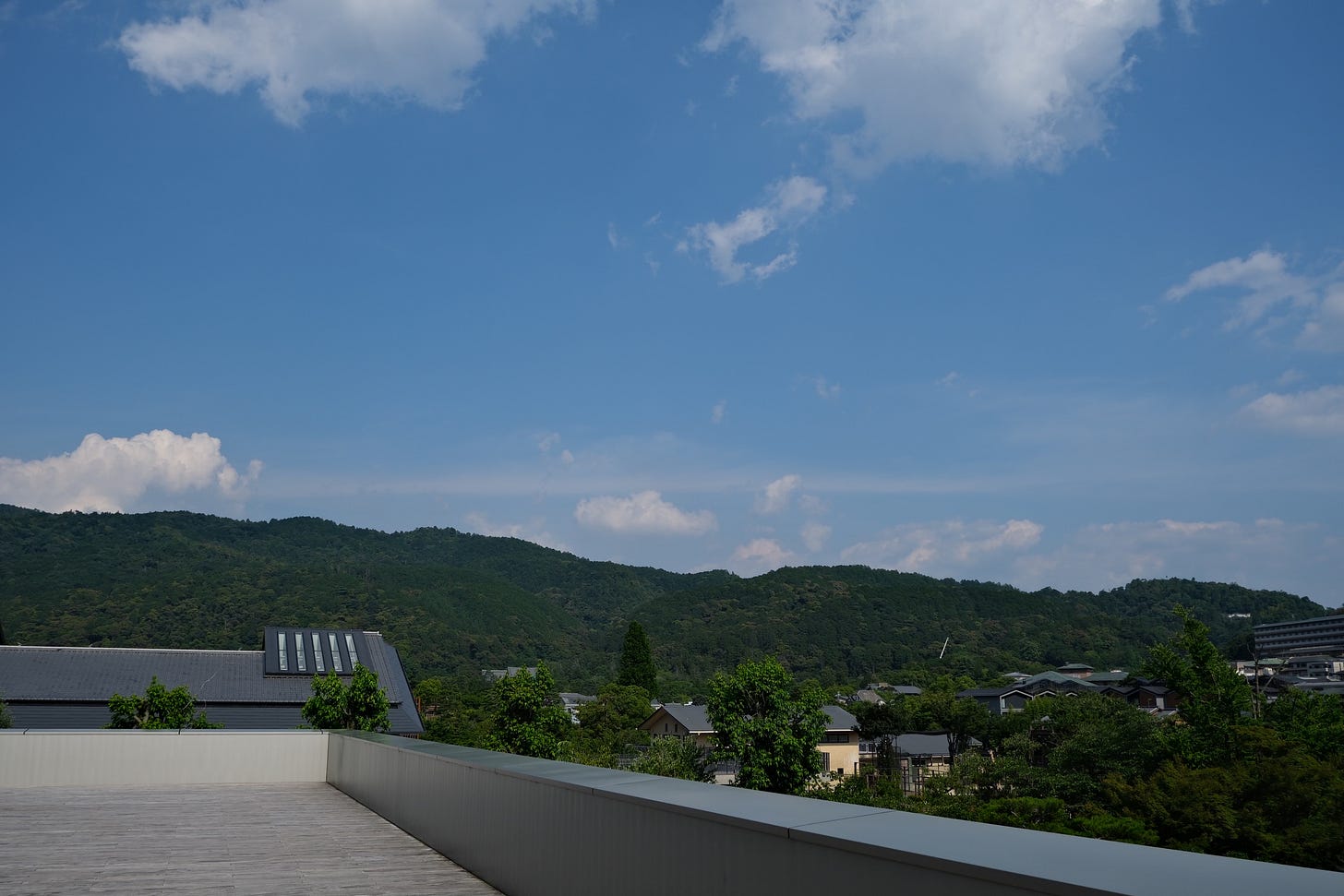When visiting Kyoto, I truly recommend spending some quiet time in an art museum’s permanent collection. It’s not just about seeing artwork—it’s about feeling the culture, spirit, and history of the place from a unique perspective.
The Collection Room at the Kyoto City KYOCERA Museum of Art features beautifully curated displays of traditional Japanese ceramics, textiles, and paintings. The landscapes, figures, and patterns depicted in these works reflect the values and daily life of historical Japan. Personally, I find great joy in connecting these scenes with the Kyoto I see and feel today. I believe you, too, will find something that resonates with your own experiences.
About the Museum
Originally opened in 1933 as the Kyoto Municipal Museum of Art, it is one of Japan’s oldest public art museums. After a major renovation in 2020, the museum reopened with a new name—thanks to a naming rights partnership with the iconic Kyoto-based company KYOCERA.
Located in the tranquil Okazaki area, the museum is nestled among other cultural sites like Heian Shrine and the zoo, offering a perfect balance of culture and nature.
A Fusion of Japanese and Western Architecture
The building is a striking example of Japanese-Western architectural fusion. When I walk through the museum, I can feel how early Western architecture influenced this cultural city.
The 2020 redesign by renowned architects Jun Aoki and Tezzo Nishizawa preserved the classical façade while adding modern, minimalist glass structures. You can now enjoy views of a Japanese garden through glass walls, creating a serene and harmonious experience.
Interestingly, admission is free to all non-exhibition areas. The museum was redesigned with openness in mind—you’re welcome to simply walk through. Even a short stroll through its garden and architectural spaces is worth your time.
Things to Know Before Visiting
Note that in Japanese museums, photography inside the exhibition rooms is generally not allowed. While a few areas may permit photos, most exhibits are meant to be quietly observed. Keep your voice down and enjoy the atmosphere.
When I visited last week, the museum was surprisingly calm. There was no queue at all—even the small café had open seats. Unless there’s a major exhibition (such as Andy Warhol, Doraemon, or Monet), weekdays are especially peaceful.
Why This Space Matters
As you travel through Kyoto, you’ll likely visit temples, shrines, gardens, and scenic streets. I encourage you to also stop by this museum’s Collection Room. These works—some hundreds of years old—reflect Kyoto’s long cultural journey.
Looking at them might connect you to the scenes you’ve experienced during your stay. Through this kind of encounter, I believe we begin to understand our own identity more deeply.
Instead of visiting only the famous tourist landmarks, take a moment to see what lies behind them. The Collection Room offers that deeper connection between Kyoto and your inner world.
Access
By Subway:
8-minute walk from Higashiyama Station (Tozai Line)
16-minute walk from Sanjo Station (Keihan) or Sanjo Keihan Station (Subway)
By Bus:
From Kyoto Station:
Bus A1, Route 5 → Get off at “Okazaki Koen Bijutsukan/Heian Jingu-mae”
Bus D2, Route 86 → Same stop
From Kawaramachi Station (Hankyu):
Bus E, Route 46 or Bus H, Route 5 → Same stop
From Sanjo Station (Keihan):
Bus D, Route 5 → Same stop
Opening Hours: 10:00–18:00
Closed: Mondays (unless a holiday), and Dec 28 – Jan 2
Collection Room Entry Fee: ¥730







